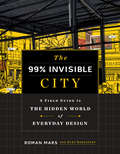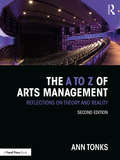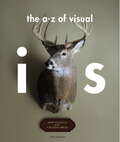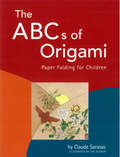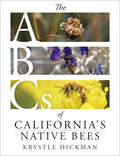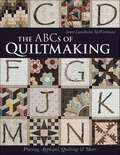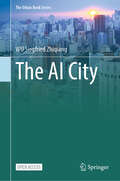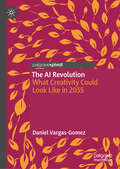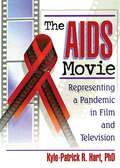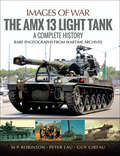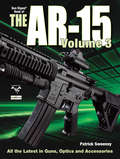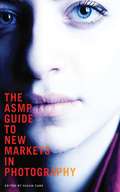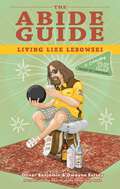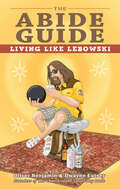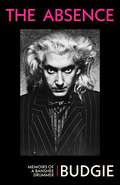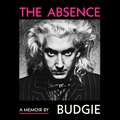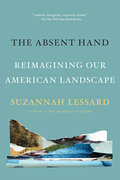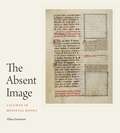- Table View
- List View
The 99% Invisible City: A Field Guide to the Hidden World of Everyday Design
by Roman Mars Kurt Kohlstedt 99% InvisibleAn entertaining guide to the unnoticed yet essential elements of our cities, featuring new and exclusive material from the creators of the wildly popular 99% Invisible podcast. Have you ever wondered what those bright, squiggly graffiti marks on the sidewalk mean?Or stopped to ponder who gets to name the streets we walk along?Or what the story is behind those dancing inflatable figures in car dealerships?99% Invisible is a big-ideas podcast about small-seeming things, revealing stories baked into the buildings we inhabit, the streets we drive, and the sidewalks we traverse. The show celebrates design and architecture in all of its functional glory and accidental absurdity, with intriguing tales of both designers and the people impacted by their designs.Now, in The 99% Invisible City: A Field Guide to Hidden World of Everyday Design, host Roman Mars and coauthor Kurt Kohlstedt zoom in on the various elements that make our cities work, exploring the origins and other fascinating stories behind everything from power grids and fire escapes to drinking fountains and street signs. With deeply researched entries and beautiful line drawings throughout, The 99% Invisible City will captivate devoted fans of the show and anyone curious about design, urban environments, and the unsung marvels of the world around them.__________You are about to see stories everywhere, you beautiful nerd. Now get out there.(P)2020 Houghton Mifflin Harcourt
The 99% Invisible City: A Field Guide to the Hidden World of Everyday Design
by Roman Mars Kurt KohlstedtA beautifully designed guidebook to the unnoticed yet essential elements of our cities, from the creators of the wildly popular 99% Invisible podcast Have you ever wondered what those bright, squiggly graffiti marks on the sidewalk mean? Or stopped to consider why you don't see metal fire escapes on new buildings? Or pondered the story behind those dancing inflatable figures in car dealerships? <P><P>99% Invisible is a big-ideas podcast about small-seeming things, revealing stories baked into the buildings we inhabit, the streets we drive, and the sidewalks we traverse. The show celebrates design and architecture in all of its functional glory and accidental absurdity, with intriguing tales of both designers and the people impacted by their designs. <P><P>Now, in The 99% Invisible City: A Field Guide to Hidden World of Everyday Design, host Roman Mars and coauthor Kurt Kohlstedt zoom in on the various elements that make our cities work, exploring the origins and other fascinating stories behind everything from power grids and fire escapes to drinking fountains and street signs. With deeply researched entries and beautiful line drawings throughout, The 99% Invisible City will captivate devoted fans of the show and anyone curious about design, urban environments, and the unsung marvels of the world around them. <P><P><b>A New York Times Bestseller</b>
The A List: The National Society Of Film Critics' 100 Essential Films
by Jay CarrThe 100 essential films of all time (you might be surprised what they are) and why they matter (you might be surprised about that, too).
The A to Z of Arts Management: Reflections on Theory and Reality
by Ann TonksThe A to Z of Arts Management, Second Edition covers 97 topics about the management of arts and cultural organisations. Each section offers a theoretical and conceptual introduction to the topic, as well as storytelling and reflections about the meaning and application of such theories in the real world. Drawing on the author’s past as a manager running media and performing arts companies and her present as a consultant helping Boards and managers, this book covers a wide range of topics, from leadership, motivation and cultural policy to passion, coffee and laughter. This second edition includes even more coverage and stories about the challenges of arts management, and new topics such as harassment, philanthropy and venues. Written for arts managers, students and Board members anywhere in the world, The A to Z of Arts Management provides information about research and academic best practice in arts management alongside stories about the reality of working in the arts and cultural industries.
The A-Z of Visual Ideas: How to Solve any Creative Brief
by John IngledewThe A–Z of Visual Ideas explains the key ideas, sources of inspiration and visual techniques that have been used throughout design history. Showing where ideas and inspiration come from, the book provides numerous strategies to help unlock the reader’s creativity.Using a dynamic and easy-to-understand A–Z format, the book reveals techniques that can be exploited to deliver ideas with greater impact, each entry offering a different starting point. Looking at everything from, Art to Zeitgeist, Intuition and Instinct to Happy Accidents and Hidden Messages, the book also features a section explaining how to use the idea or technique, providing readers with an infallible ‘tool kit’ of inspiration. Including hundreds of inspirational quotes and packed with great examples of advertising campaigns, posters, book and magazine covers and illustrations, this is an indispensable primer that shows design students and professionals how to solve any creative brief.
The A-Z of Visual Ideas: How to Solve any Creative Brief
by John IngledewThe A–Z of Visual Ideas explains the key ideas, sources of inspiration and visual techniques that have been used throughout design history. Showing where ideas and inspiration come from, the book provides numerous strategies to help unlock the reader’s creativity.Using a dynamic and easy-to-understand A–Z format, the book reveals techniques that can be exploited to deliver ideas with greater impact, each entry offering a different starting point. Looking at everything from, Art to Zeitgeist, Intuition and Instinct to Happy Accidents and Hidden Messages, the book also features a section explaining how to use the idea or technique, providing readers with an infallible ‘tool kit’ of inspiration. Including hundreds of inspirational quotes and packed with great examples of advertising campaigns, posters, book and magazine covers and illustrations, this is an indispensable primer that shows design students and professionals how to solve any creative brief.
The ABC's of Origami
by Claude SarasasArranged in the traditional A-B-C book sequence, this charming book displays a key word in English along with an origami exercise with easy-to-follow diagrams on each page. This is an ideal gift book for children.
The ABC's of Origami
by Claude SarasasArranged in the traditional A-B-C book sequence, this charming book displays a key word in English along with an origami exercise with easy-to-follow diagrams on each page. This is an ideal gift book for children.
The ABCs of California's Native Bees
by Krystle HickmanJourney through the world of California native bees, one letter at a time."Krystle Hickman's travels across wild landscapes reveal rare and elusive pollinators, each one meticulously photographed and arranged in a brilliant A-to-Z tribute." —Olivia Messinger Carril, coauthor of The Bees in Your BackyardNational Geographic Explorer Krystle Hickman has spent a decade capturing exquisitely detailed photographs of native bees and making exciting discoveries about their behavior in the field. In her debut book of natural history, she offers an intimate look at the daily habits of rare and overlooked native bees in California: those cloaked in green or black or red, that live alone in the ground or sleep inside flowers, that invade nests and pillage resources like infinitesimal conquerors, or that, unlike more generalist honeybees, are devoted exclusively to the pollen of a single type of flower. A committed conservationist and community scientist who knows all too well how precarious the wellbeing of these insects is, Hickman shares her adventures in local native plant gardens and throughout the far reaches of California to bring the beauty of such diverse ecosystems into wondrous bee's-eye view. Meant for all curious readers, this collection of bee stories—one for each letter of the alphabet, matching the first letter of a bee's scientific name—will leave you both wowed and compelled to help save these fascinating beings and the lands they call home.
The ABCs of Quiltmaking: Piecing, Appliqué, Quilting & More
by Janet Lundholm McWorkmanA primer for quilting techniques Quilting school is now in session, and it’s never been so fun to hit the books! Take the challenge to move beyond basic patchwork with 12 skill-building lessons, including paper piecing, strip piecing, bargello, set-in seams, appliqué, crazy quilting, and more. Learn the tools, terms, and techniques that are the bedrocks of quiltmaking. Use your new skills to finish a gorgeous final exam, an ABC-themed sampler quilt, plus a handful of quick-finish projects. It’s a complete quilting course in one book. - Grow as a quilter! 12 lessons from curves to paper piecing, Y-seams, appliqué, and more - Timeless alphabet quilt pattern that incorporates all techniques, plus smaller projects - Expand your craft with this complete quilting course in one book
The AI City (The Urban Book Series)
by Siegfried Zhiqiang WUThis open access book presents the concept of AI Cites for the first time. It includes the theoretical basis, development frontier, and different application scenarios of artificial intelligence cities. The book is accompanied by rich practical cases to conduct in-depth and detailed discussions on the proposition of artificial intelligence cities. It fills the gap between artificial intelligence and urban planning. This book points out the urgent human needs in the city for AI scientists to considered in the next round of AI technology development. It also provides new ideas for urban planners and researchers to solve problems with new technologies.
The AI Revolution: What Creativity Could Look Like in 2035
by Daniel Vargas-GomezThis book examines AI&’s transformative impact on creativity, blending insights from economics, media studies, and technology to analyze its role in the arts and the broader creative industries. AI challenges the way we relate and use technology, as well as expand how we think of technological progress overall. Structured in three parts, the book first rethinks creativity as an inclusive, collaborative process through theories like Actor-Network-Theory, arguing AI is a new form of agency within creative networks. It explores the economic drivers of AI adoption, citing industry forecasts, long term trends and the rise of what sociologist Richard Florida calls the &“Creative Class&”. Through critical analysis of the gaps between the rhetoric and realities of AI, the text advocates for &“Augmented Creativity&”, as the right approach to balance human-AI collaboration. Lastly, the book studies pragmatic scenarios for 2035, focusing on job shifts, AI-generated content, and artistic experimentation—avoiding speculative AI hype. By grounding debates in real-world impacts, the book urges a critical, yet nuanced view of AI that ensures it remains a potential agent for collaboration rather than a replacement of human skill and imagination.
The AIDS Movie: Representing a Pandemic in Film and Television
by Kylo-Patrick R HartAre people with HIV/AIDS treated fairly in films?Here is a compelling book that provides you with a thorough examination of how HIV/AIDS is characterized and portrayed in film and how this portrayal affects American culture. The AIDS Movie: Representing a Pandemic in Film and Television uncovers the primary ways that films about HIV/AIDS influence American ideology and contribute to society's view of the disease. In The AIDS Movie, professors and scholars in the areas of popular culture, film, sociology, and gay and lesbian studies will discover cross-cultural approaches that can be used to analyze the representation of AIDS in American films made in the first two decades of the pandemic. Giving you insight into the production and circulation of social meanings pertaining to HIV/AIDS, this study explores the social ramifications of such representations for gay men in American society, as well as for the rest of the population. Interesting and informative, The AIDS Movie: Representing a Pandemic in Film and Television examines the ways that AIDS has been represented in American movies over the past two decades, defines and proposes criteria for identifying an “AIDS movie” and explores how these images shape social opinions about AIDS and gay men. The AIDS Movie discusses several character types such as “innocent victims” and “guilty villains” and the process of victim-blaming that occurs in AIDS movies. Defining an “AIDS movie” as a film with at least one character who either has been infected with HIV, has developed AIDS, or is grieving the recent death of a loved one from AIDS, this guide bases standards for these movies on several works, including: Chocolate Babies It's My Party Jeffrey The Living End Grief An Early Frost Men in Love A Place for Annie Philadelphia The Ryan White Story Gia Boys on the SideThe AIDS Movie: Representing a Pandemic in Film and Television is compelling and insightful as it cleverly reveals how AIDS is portrayed in cinema and television, and how that portrayal affects American culture.
The AMX 13 Light Tank: A Complete History
by Peter LauThe AMX 13 was originally designed in the immediate aftermath of the Second World War. It represents French ambitions for national resurgence and withdrawal from wartime dependence on American military technology.Being a light tank it was an ambitious and far sighted departure from conventional tank design and it found a ready export market as well as being a critical part in the French Army arsenal. Its basic hull design lent itself to the development of a vast list of variants.French designers progressively modernized, and indeed reinvented, the AMX13 and enabled it to claim to be one of the most successful armored vehicle programs of the postwar period. It proved its worth in numerous small wars worldwide in the service of many countries.This, the first commercially published work on the AMX13 in English, examines in detail the technical industrial and tactical story of this remarkably successful armored fighting vehicle. The authoritative text is backed by an impressive selection of images
The AR-15 Volume 3
by Patrick SweeneyThe AR-15 has become America's favorite rifle-and no one knows it better than Patrick Sweeney. Now, in Volume 3 of his best-selling series on the AR, Sweeney unlocks the mysteries behind the piston AR. From factory-stock rifles to do-it-yourself conversions, if there's anything you want to know about the latest generation of the AR-15s, you'll find it in Gun Digest ® Book of The AR-15, Volume 3. It's All Here! Piston designs Conversions from direct impingement to piston operation New manufacturers: H&K, Sun Devil, CMMG, among others Magazines and other accessories And much, much more! Whether you're buying your first AR or building one from the ground up, there's no better reference than Sweeney's AR series from Gun Digest ® Books. And now, with Gun Digest ® Book of The AR-15, Volume 3, you too, will be an expert on the most popular rifle in America!
The ASMP Guide to New Markets in Photography
by Susan CarrAs a result of changes in technology and the economy, every successful photography career today is unique, and each image-maker needs to build a career that matches his or her talents to one or more markets. This indispensable manual from the American Society of Media Photographers sets the stage for understanding where the industry is now and where it is headed while offering step-by-step instructions for building a career tailored to one's own talents, interests, and business style in today's market. An overview of developments in the industry covers the new visual needs created by the economy, the changing definition of what it means to be a photographer, the shifting distribution of clients, the role of technology, and the role of copyright, licensing, compensation, and contracts. Photographers learn how to navigate this changing landscape in a second section that guides them through a strategic analysis of their strengths and weaknesses and provides expert advice on building a business plan, marketing, and selling. Also included are concise business biographies of fifty visual artists who have successfully taken on the new markets in photography, to give readers an idea of the many directions a career today can take.
The AUN/SEED-Net Joint Regional Conference in Transportation, Energy, and Mechanical Manufacturing Engineering: Proceeding of RCTEMME2021, Hanoi, Vietnam (Lecture Notes in Mechanical Engineering)
by Anh-Tuan Le Van-Sang Pham Minh-Quy Le Hoang-Luong PhamThis book (The AUN/SEED-Net Joint Regional Conference in Transportation, Energy, and Mechanical Manufacturing Engineering) gathers selected papers submitted to the 14th Regional Conference in Energy Engineering and the 13th Regional Conference in Mechanical Manufacturing Engineering in the fields related to intelligent equipment, automotive engineering, mechanical systems and sustainable manufacturing, renewable energy, heat and mass transfer. Under the theme of “Integration and Innovation for Sustainable Development,” This book consists of papers in the aforementioned fields presented by researchers and scientists from universities, research institutes, and industry showcasing their latest findings and discussions with an emphasis on innovations and developments in embracing the new norm, resulting from the COVID-19 pandemic.
The Abide Guide: Living Like Lebowski
by Dwayne Eutsey Oliver BenjaminA Simon & Schuster eBook. Simon & Schuster has a great book for every reader.
The Abide Guide: Living Like Lebowski
by Dwayne Eutsey Oliver BenjaminThe Dude abides . . . and you can too, with the Seven Spiritual Laws of Taking it Easy and other Lebowski-level wisdom. When you seek salvation from this stressed out, uptight world, there’s only one man to go to for guidance—the Dude. At once helpful, funny and profound (like The Big Lebowski itself), this survival guide from the founders of the Church of the Latter-Day Dude and their top disciples shows how to be as Dude-like as the Dude (well, almost):•Secrets of sacred Dudeist practices•The Seven Spiritual Laws of Taking it Easy•Great Dudes who changed the world (without really trying)•New feminist philosophy for special ladies•The Way of the Dude applied to politics, ethics, and finances•A twelve-step program for personal dudevolution•The science of really tying your room togetherAll this and a lot more what-have-you. So the next time life throws you a gutterball, just pick up this book and ask, “What Would the Dude Do?” It’s your answer for everything.
The Absence: Memoirs of a Banshee Drummer
by BudgieAs a member of Big in Japan, The Slits and, most famously, Siouxsie and the Banshees and The Creatures, 'Budgie' was an era-defining drummer in the much-mythologised post punk scene of the late 1970s and early 1980s. But before he was Budgie, Peter Clarke was a boy growing up in working class St Helens in the 1960s. The loss of his mum at a young age created the absence that haunts the pages of this book. As a teenager disenchanted with art school in Liverpool, Peter became Budgie and befriended the likes of Jayne Casey, Pete Burns and other luminaries of the legendary Eric's Club before taking off for London and the big city heat of punk. Budgie's unique technique and musical sensitivity endeared him to the all-female group The Slits, who asked him to play on their debut album Cut. Subsequent touring with former members of the Sex Pistols and others from the post punk aristocracy firmly established Budgie's reputation for innovation. But the beating heart of this at times painfully honest account of a life often sabotaged is, of course, his long-term position as Siouxsie and the Banshees' drummer and co-writer alongside his ex-wife Siouxsie Sioux. Their creative partnership produced some of the most seductive and celebrated pop music of the decade. Eventually, their personal relationship started to fall apart, with inevitable consequences for both bands. The Absence is bravely unflinching in its dissection of how and why this happened, and powerfully moving in its account of the angels that emerged to heal both these wounds and those of a mother's lost love. A man and musician whose creativity and singular style came to define the goth-pop 1980s, Budgie's life is both fabulously glamorous and a cautionary tale. For the first time the story of the era's most exalted and mysterious bands has been told by one who survived inside the belly of the beast.
The Absence: Memoirs of a Banshee Drummer
by BudgieAs a member of Big in Japan, The Slits and, most famously, Siouxsie and the Banshees and The Creatures, 'Budgie' was an era-defining drummer in the much-mythologised post punk scene of the late 1970s and early 1980s. But before he was Budgie, Peter Clarke was a boy growing up in working class St Helens in the 1960s. The loss of his mum at a young age created the absence that haunts the pages of this book. As a teenager disenchanted with art school in Liverpool, Peter became Budgie and befriended the likes of Jayne Casey, Pete Burns and other luminaries of the legendary Eric's Club before taking off for London and the big city heat of punk. Budgie's unique technique and musical sensitivity endeared him to the all-female group The Slits, who asked him to play on their debut album Cut. Subsequent touring with former members of the Sex Pistols and others from the post punk aristocracy firmly established Budgie's reputation for innovation. But the beating heart of this at times painfully honest account of a life often sabotaged is, of course, his long-term position as Siouxsie and the Banshees' drummer and co-writer alongside his ex-wife Siouxsie Sioux. Their creative partnership produced some of the most seductive and celebrated pop music of the decade. Eventually, their personal relationship started to fall apart, with inevitable consequences for both bands. The Absence is bravely unflinching in its dissection of how and why this happened, and powerfully moving in its account of the angels that emerged to heal both these wounds and those of a mother's lost love. A man and musician whose creativity and singular style came to define the goth-pop 1980s, Budgie's life is both fabulously glamorous and a cautionary tale. For the first time the story of the era's most exalted and mysterious bands has been told by one who survived inside the belly of the beast.
The Absence: Memoirs of a Banshee Drummer
by BudgieAs a member of Big in Japan, The Slits and, most famously, Siouxsie and the Banshees and The Creatures, 'Budgie' was an era-defining drummer in the much-mythologised post punk scene of the late 1970s and early 1980s. But before he was Budgie, Peter Clarke was a boy growing up in working class St Helens in the 1960s. The loss of his mum at a young age created the absence that haunts the pages of this book. As a teenager disenchanted with art school in Liverpool, Peter became Budgie and befriended the likes of Jayne Casey, Pete Burns and other luminaries of the legendary Eric's Club before taking off for London and the big city heat of punk. Budgie's unique technique and musical sensitivity endeared him to the all-female group The Slits, who asked him to play on their debut album Cut. Subsequent touring with former members of the Sex Pistols and others from the post punk aristocracy firmly established Budgie's reputation for innovation. But the beating heart of this at times painfully honest account of a life often sabotaged is, of course, his long-term position as Siouxsie and the Banshees' drummer and co-writer alongside his ex-wife Siouxsie Sioux. Their creative partnership produced some of the most seductive and celebrated pop music of the decade. Eventually, their personal relationship started to fall apart, with inevitable consequences for both bands. The Absence is bravely unflinching in its dissection of how and why this happened, and powerfully moving in its account of the angels that emerged to heal both these wounds and those of a mother's lost love. A man and musician whose creativity and singular style came to define the goth-pop 1980s, Budgie's life is both fabulously glamorous and a cautionary tale. For the first time the story of the era's most exalted and mysterious bands has been told by one who survived inside the belly of the beast.
The Absent Hand: Reimagining Our American Landscape
by Suzannah Lessard"Of beach plums, ramps, and Ramada Inns: a quietly sensitive eminently sensible consideration of the landscapes of our lives . . . A gift." —Kirkus ReviewsFollowing her bestselling The Architect of Desire, Suzannah Lessard returns with a remarkable book, a work of relentless curiosity and a graceful mixture of observation and philosophy. This intriguing hybrid will remind some of W. G. Sebald’s work and others of Rebecca Solnit’s, but it is Lessard’s singular talent to combine this profound book–length mosaic— a blend of historical travelogue, reportorial probing, philosophical meditation, and prose poem—into a work of unique genius, as she describes and reimagines our landscapes. In this exploration of our surroundings, The Absent Hand contends that to reimagine landscape is a form of cultural reinvention. This engrossing work of literary nonfiction is a deep dive into our surroundings—cities, countryside, and sprawl—exploring change in the meaning of place and reimagining the world in a time of transition. Whether it be climate change altering the meaning of nature, or digital communications altering the nature of work, the effects of global enclosure on the meaning of place are panoramic, infiltrative, inescapable. No one will finish this book, this journey, without having their ideas of living and settling in their surroundings profoundly enriched.
The Absent Image: Lacunae in Medieval Books
by Elina GertsmanGuided by Aristotelian theories, medieval philosophers believed that nature abhors a vacuum. Medieval art, according to modern scholars, abhors the same. The notion of horror vacui—the fear of empty space—is thus often construed as a definitive feature of Gothic material culture. In The Absent Image, Elina Gertsman argues that Gothic art, in its attempts to grapple with the unrepresentability of the invisible, actively engages emptiness, voids, gaps, holes, and erasures.Exploring complex conversations among medieval philosophy, physics, mathematics, piety, and image-making, Gertsman considers the concept of nothingness in concert with the imaginary, revealing profoundly inventive approaches to emptiness in late medieval visual culture, from ingenious images of the world’s creation ex nihilo to figurations of absence as a replacement for the invisible forces of conception and death.Innovative and challenging, this book will find its primary audience with students and scholars of art, religion, physics, philosophy, and mathematics. It will be particularly welcomed by those interested in phenomenological and cross-disciplinary approaches to the visual culture of the later Middle Ages.
The Absent Image: Lacunae in Medieval Books
by Elina GertsmanWinner of the 2022 Charles Rufus Morey Award from the College Art AssociationGuided by Aristotelian theories, medieval philosophers believed that nature abhors a vacuum. Medieval art, according to modern scholars, abhors the same. The notion of horror vacui—the fear of empty space—is thus often construed as a definitive feature of Gothic material culture. In The Absent Image, Elina Gertsman argues that Gothic art, in its attempts to grapple with the unrepresentability of the invisible, actively engages emptiness, voids, gaps, holes, and erasures.Exploring complex conversations among medieval philosophy, physics, mathematics, piety, and image-making, Gertsman considers the concept of nothingness in concert with the imaginary, revealing profoundly inventive approaches to emptiness in late medieval visual culture, from ingenious images of the world’s creation ex nihilo to figurations of absence as a replacement for the invisible forces of conception and death.Innovative and challenging, this book will find its primary audience with students and scholars of art, religion, physics, philosophy, and mathematics. It will be particularly welcomed by those interested in phenomenological and cross-disciplinary approaches to the visual culture of the later Middle Ages.

